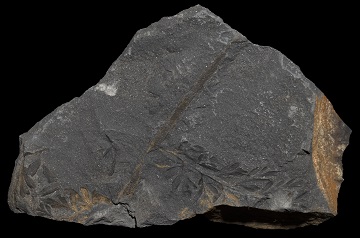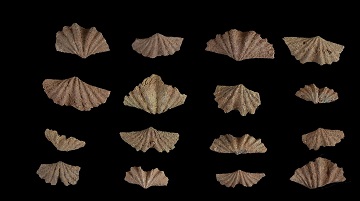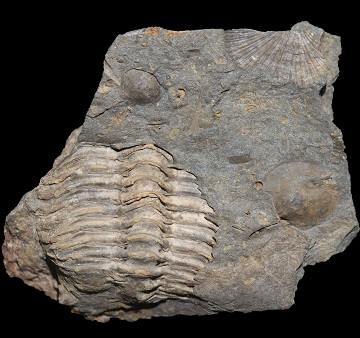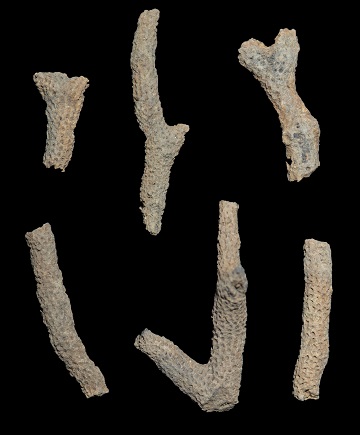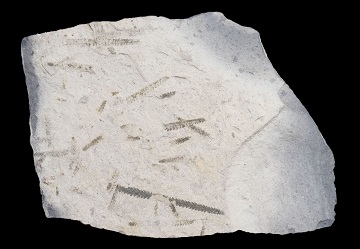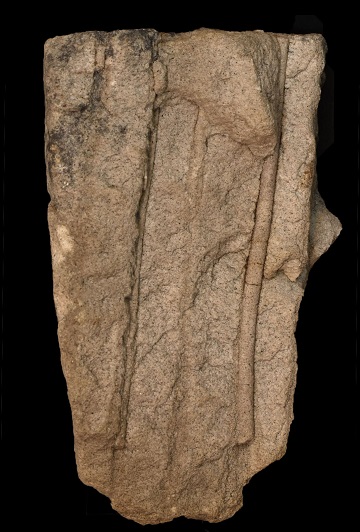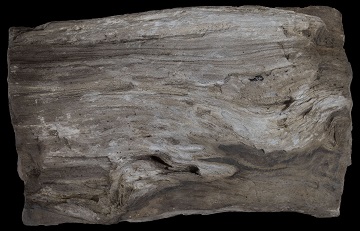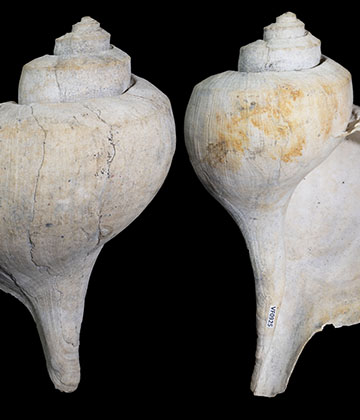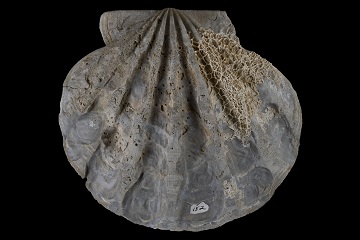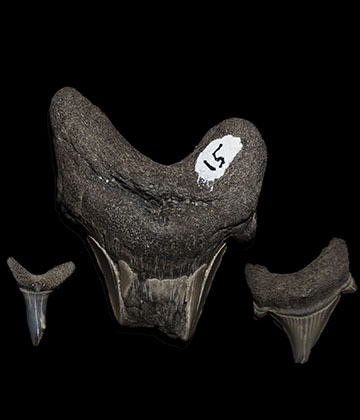Virginia's five distinct physiographic provinces are the Appalachian Plateau, the Valley and Ridge, the Blue Ridge, the Piedmont and the Coastal Plain. These provinces are divided by the topography; this can be seen in the differences between the flat Coastal Plain and mountains of the Blue Ridge. Each of these provinces has unique characteritics that have, over the course of history, defined the culture and industry in those areas.
Virginia has six geologic provinces, with the addition of a Mesozoic Basin province to the above five physiographic provinces. The geologic provinces are defined by the geographic distribution of the rocks and minerals found there.
The physiographic and geologic provinces provide us a way to define areas within our state based on landforms and mineral resources. The geology of Virginia has prescribed certain areas as better for agricluture. The flat areas of the Piedmont are particularly good for farming. The mountains and hardrock found in the Valley and Ridge and Blue Ridge are difficult to travel through and to farm, but contain many valuable natural resources such as timber and granite. The Appalachian Plateau boasts the riches of our state's coal fields. The Coastal Plain offers flat land with rich soil, as well as the abudance of the sea and is protected by barrier islands that make for safe ports.
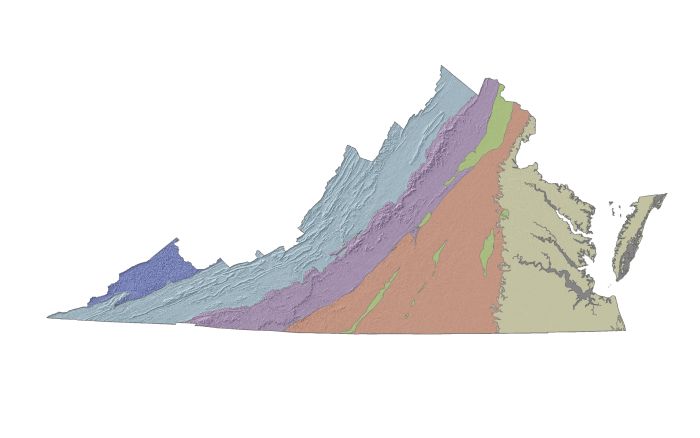
Virginia Geologic Provinces
Learning about the different types of fossils in each area of our state can help us to better understand our history. Below you will find a list of the most frequently found fossils found in each geologic province; these are fossils you might find as you study the area.
Appalachian Plateau
The Applachian Plateau is the smallest of Virginia's geologic provinces, but regionally it stretches from Alabama to New York, just brushing the far southwestern portion of our state. This region exhibits high elevations, about 2,000 feet above sea level, and is cut through by rivers and streams, however the plateau itself is mostly rugged and hilly with some flat areas. Rocks here are sedimentary and flat lying. This area is very rich in both coal and natural gas.
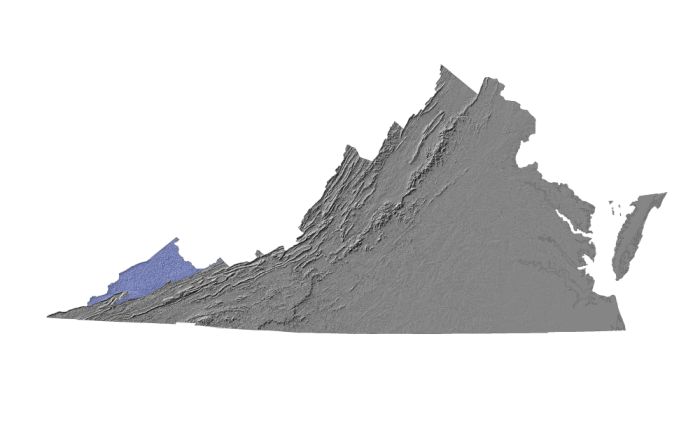
Fossil |
Example |
|---|---|
| Ferns:
Paleozoic Ferns are vascular non-flowering plants. Impressions of ferns can be found in Late Paleozoic rocks of the Valley and Ridge Province as well as the Appalachian Plateau, where these fossils are associated with coal beds. |
|
Valley and Ridge
The Valley and Ridge extends from the south to the north of our state along the western border. You can see the rows of parallel mountains stretching across the horizon as you look to the west. Here the rocks move from the flat lying rocks found in the Appalachian Plateau to folded and faulted sedimenatary formations caused by dramatic movement of the continents.
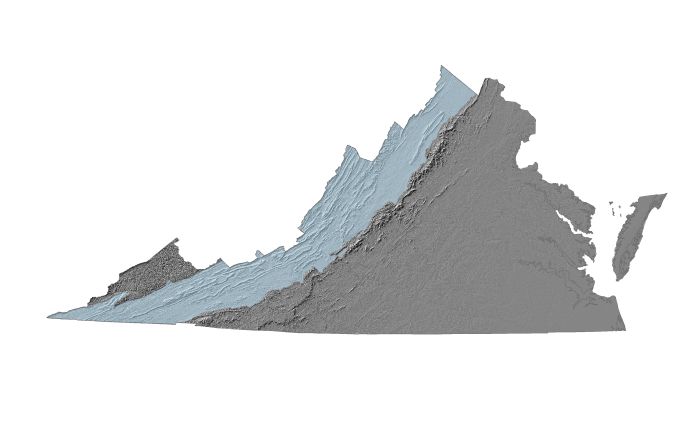
Fossil |
Example |
|---|---|
| Brachiopods:
A variety of marine invertebrate, brachiopods are fossils that once littered the ocean floor. Fossil brachiopods can be found in the Paleozoic rocks of Virginia's Valley and Ridge Province. |
|
| Ferns:
Paleozoic Ferns are vascular non-flowering plants. Impressions of ferns can be found in Late Paleozoic rocks of the Valley and Ridge Province as well as the Appalachian Plateau, where these fossils are associated with coal beds. |
|
| Trilobites:
Trilobites are members of an extinct group of Arthropods that scuttled across the sea floor throughout the Paleozoic Era. Characterized by a three-lobed skeleton, a variety of trilobite fossils can be found in the rocks of the Valley and Ridge Province. |
|
| Coral:
Coral is the hard calcareous skeleton formed by the polyps of bottom-dwelling marine organisms. Some type of corals are formed by colonies, others occur as single individuals. Colonial corals can be found in the Cenozoic sediments of the Coastal Plain; individual and colonial corals can be found in the Paleozoic sedimentary rocks of the Valley and Ridge Province. |
|
| Graptolite:
These long, tube-like fossils, with what look like serrated teeth, are known as Graptolites. Graptolites are actually thought to be colonial animals with many individuals living within the spikes (living spaces) along a tube. These tubes are thought to have extended out from a Jellyfish-like body that would float through the ocean. |
|
| Gastropods:
Gastropods are mollusks such as snails that secrete a single shell, usually spiraled. Cenozoic gastropods, such as the high-spired Turritella, are found on the Coastal Plain, while Paleozoic gastropods such as the low-spired Maclurites, are found in the Valley and Ridge Province. |
Blue Ridge
The Blue Ridge is a narrow province that nests itself against the Valley and Ridge, travelling in the same north to south orientation. This province includes the beautiful Blue Ridge mountains and Mt. Rogers, Virginia's highest peak at 4,056 ft. The rocks here have moved from the sedimentary rocks of the western provinces to igneous and metamorphic rocks. It is in this provinces that you will find Virginia's oldest rocks such as granite.
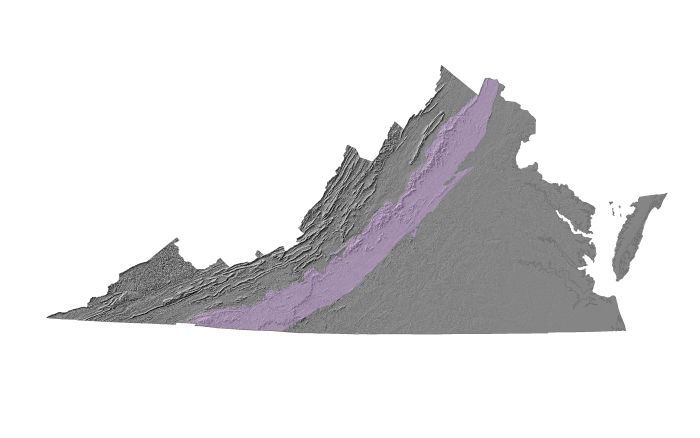
Fossil |
Example |
|---|---|
| Worm tubes:
The oldest common fossils in Virginia, these are traces of the tubes inhabited by primitive worms living along a Paleozoic shoreline. Found along the western flank of the Blue Ridge Mountains. |
Piedmont
The Piedmont is the largest of Virginias physiographic provinces stretching across central Virginia from the northern most point to the southern most point. The Piedmont is topographiclly very different from the western provinces in that it is very flat with the bedrock buried under a thick layer of saprolite and topsoil. It is here that the rocks become much more complicated becasue they have had dramatic changes over time. The majority of this provice is composed of sedimentary rocks but smaller basins of igneous and metamoprhic rocks are found as well, the result of intense geologic movements. It is in this province you will find many valuable economic rocks and minerals such as coal, slate, kyanite and uranium.
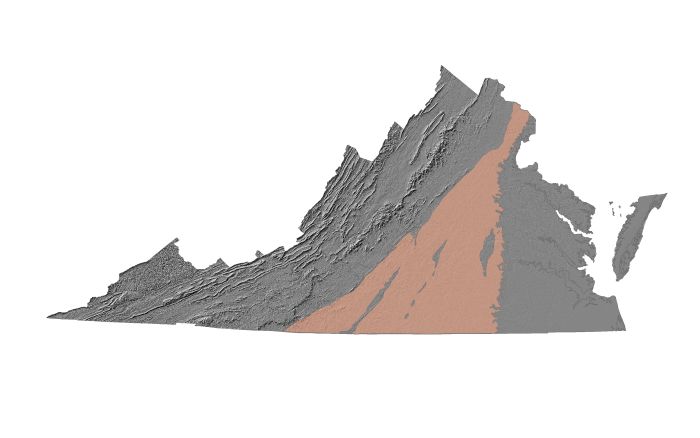
Fossil |
Example |
|---|---|
| Crionoid:
Even though they look like plants, crinoids are actually marine animals who can swim. They use their long arms to catch organic debris as it floats to the bottom. Crinoids are still around today, but they used to be far more abundant and diverse during both the Mesozoic and Paleozoic. Fossil crinoids can be found today in the Valley and Ridge and Piedmont regions. |
|
| Brachiopods:
A variety of marine invertebrate, brachiopods are fossils that once littered the ocean floor. Fossil brachiopods can be found in the Paleozoic rocks of Virginia's Blue Ridge Province. |
Mesozoic Basic
The Piedmont is the largest of Virginias physiographic provinces stretching across central Virginia from the northern most point to the southern most point. The Piedmont is topographiclly very different from the western provinces in that it is very flat with the bedrock buried under a thick layer of saprolite and topsoil. It is here that the rocks become much more complicated becasue they have had dramatic changes over time. The majority of this provice is composed of sedimentary rocks but smaller basins of igneous and metamoprhic rocks are found as well, the result of intense geologic movements. It is in this province you will find many valuable economic rocks and minerals such as coal, slate, kyanite and uranium.
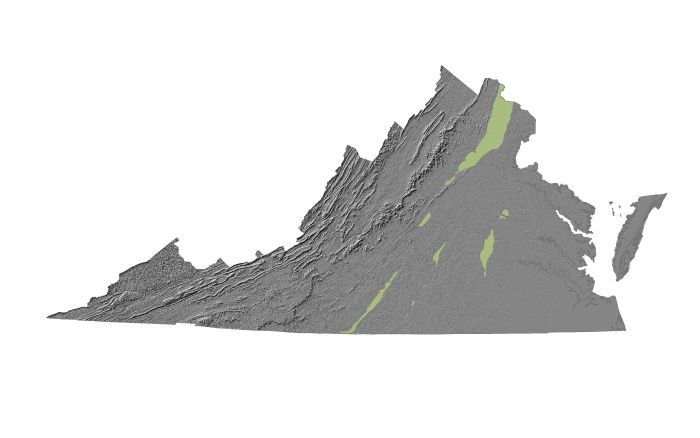
Fossil |
Example |
|---|---|
| Fish:
Hidden in the thinly-bedded shales of the Virginia Triassic Basins are fossil fish. They have ganoid scales which means their bony scales are rather inflexible but very protective. Their scales indicate these fish were related to gars and coelacanths. |
|
| Footprint:
While there have not been any dinosaur body fossils found in Virginia, these footprints are the best evidence that they roamed Virginia 200 million years ago. The footprints were most likely made on the margin of an ancient large lake. Trackways like the one this footprint comes from are extremely rare and require very specific depositional environments to be preserved. |
|
| Silicified Wood:
This wood is closely related to the petrified wood at the Petrified Forest National Park. Tree composition changed greatly over the Mesozoic, but during the Triassic, at the beginning of the Mesozoic Era, the most abundant type of tree was the conifer. Because of this, the fossil wood found in Virginia is more closely related to pines than to flowering trees like maples. |
Coastal Plain
The Coastal Plain is comprosed of unconsolidated and partially unconsolidated material. This area is characterized by a much younger landscape that gently moves downward towards the coastline and is divided by tributaries of major rivers. It is here that you will discover the Chesapeake Bay Impact Structure that was created 35 million years earlier resulting in a massive crater. It is in this province you will find sand, silt and clay as well as many marine fossils. Sand is an important resource as well as heavy minerals that are found in this area.
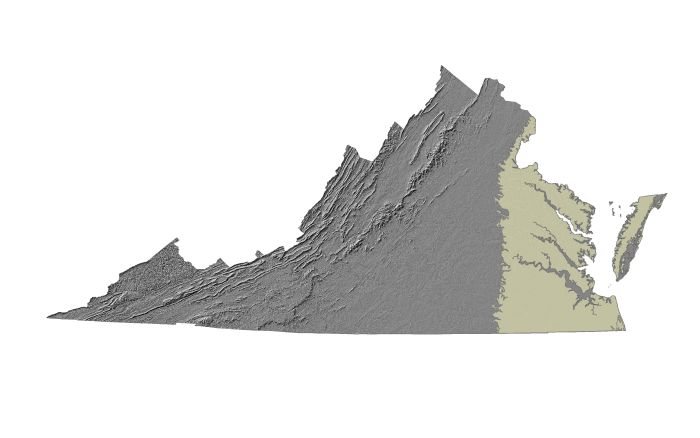
Fossil |
Example |
|---|---|
| Coral:
Coral is the hard calcareous skeleton formed by the polyps of bottom-dwelling marine organisms. Some type of corals are formed by colonies, others occur as single individuals. Colonial corals can be found in the Cenozoic sediments of the Coastal Plain; individual and colonial corals can be found in the Paleozoic sedimentary rocks of the Valley and Ridge Province. |
|
| Gastropods:
Gastropods are mollusks such as snails that secrete a single shell, usually spiraled. Cenozoic gastropods, such as the high-spired Turritella, are found on the Coastal Plain, while Paleozoic gastropods such as the low-spired Maclurites, are found in the Valley and Ridge Province. |
|
| Bivalves:
Bivalves are soft-bodied animals that secrete a hard shell with two sides, such as an oyster or clam. Pelecypods are abundant in the Cenozoic sedimentary deposits of Virginia's Coastal Plain. Virginia's state fossil is the bivalve Chesapecten jeffersonius. |
|
| Shark Teeth:
Teeth from a wide variety of sharks are found in the Cenozoic sedimentary deposits of Virginia's Coastal Plain. Several times during the Cenozoic Era this area was covered by a shallow sea. |
